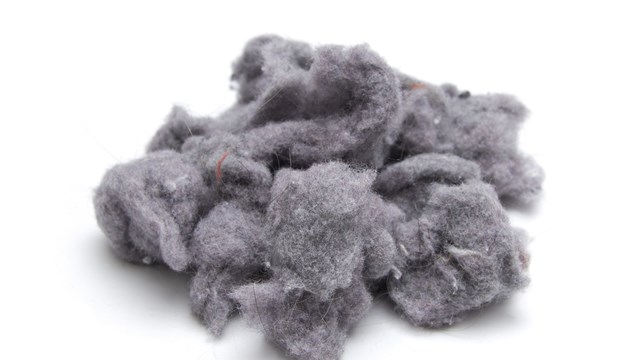Given the number of breaths we all take on any given day, it's surprising that more attention isn't given to air quality. The subject usually only comes up when there's a problem - after people start sneezing or feeling ill. As with any potential health issue, however, the best time to talk about air quality problems is before they start. Preventive measures and a few doses of common sense can go a long way in keeping residents - and buildings - healthy.
Just like people, buildings can get ill from time to time. Called "sick building syndrome," the phenomenon causes occupants to experience symptoms or health effects that may be linked to the time they spend in that building. These symptoms may include headaches, eye, nose or throat irritation, a dry cough, dry or itchy skin, dizziness and nausea, even difficulty concentrating, says James Malek, president of Indoor Environmental Services in the Bronx. In most cases, these symptoms tend to dissipate or disappear when the sufferer is away from the building.
The root causes of sick building syndrome are many and varied - and often not entirely provable by scientific means. Usually, however, the suspected culprits fall into one of three categories: inadequate ventilation; chemical contaminants from indoor sources such as adhesives, carpeting, upholstery, cleaning agents - even manufactured wood products - or biological contaminants, such as bacteria, molds, pollen or viruses. "The cause can be any of a dozen different problems," Malek says.
According to Robert Madarasz of ENVIROspect, Inc. in Smithtown, "A building can become "˜sick' for many reasons. Even something like new interior building materials and furnishings can contribute to indoor air quality problems and a temporary sick building syndrome."
The only way to get at the root of sick building syndrome is to dig. Finding out as much information as possible about what's happening within a building's walls may be the only way to find a permanent solution to an air quality issue. If residents begin complaining of respiratory or other problems, it is imperative to turn to an expert.
Larry Vetter, vice president of ENVIROspect, recommends having the building surveyed before taking any radical action. "You'll want to find out if the problem is biological, chemical or something else," he says. "If you go right ahead and start doing tests without doing a survey first, that can run into a lot of money, and it might not even be necessary." Resident complaints usually will lead surveyors to a potential source of trouble quickly, helping specialists determine which building areas should be examined most closely.
Many times, assessments will lead to one of the best-known culprits for poor air quality: mold. "As of late, the biggest air quality complaint has been about mold," Vetter says. "It's all over the news and people are more conscious of it."
If mold does appear to be the source of the problem, technicians will take air samples and do lab tests specific to mold or bacteria in order to identify species, genus and quantity. At the same time, they will inspect the area to see if they visually spot the cause of the problem. The root of mold or bacteria may be something obvious - like standing water - or it could be a little harder to find. "We'll investigate further," Vetter says. "Is there a roof leak that no one sees? Is there a pipe leak behind a wall?"
When it comes to mold, water is most often the cause. Mold spores need two things to grow: water and cellulose, which is found in wood and wood products, Malek says. Water infiltration from roofing, siding and plumbing sources can be damaging if left unchecked. "Any water stain that's turning a brownish color - that's mold starting," he says. "If a water spot does not dry within 24 to 48 hours, there's a potential for problems." It's important to control humidity and keep it at "around 40 to 60 percent." Dry, ventilated spaces make it hard for mold to grow, a definite plus in the war against poor air quality.
Mold detection is simple, according to Jim Kelly, a regional director with Quality Environmental in Ronkonkoma, New York. Basically, if you can see or smell mold, you have mold, he says. "Good mold inspection practices dictate looking carefully in areas where moisture/water is likely to be or where water likely had been," says Kelly. "It is easier to find a moisture problem by looking for water than it is to find a moisture problem by testing for mold. Look in places where you might find water. Remember that mold may grow in hidden spaces, such as within walls or beneath furniture and cabinets," Kelly says.
Bulk sampling of visible mold can identify the species present and air sampling will tell if airborne spores are present in the home. Bleach products clean mold surfaces but do not kill or eliminate the mold. That is where the services of a remediator come in, says Kelly. His company offers free mold inspections to customers, and this includes a visual inspection, humidity testing of the air and moisture testing of the walls, ceiling and floors. If a mold sampling test is required, that could range between $75 to $150 per sample, he says, and remediating a small basement area could cost as much as $2,000.
Outside of water and moisture, a large number of issues, both large and small, can contribute to indoor air quality problems. Dust mites, pet dander, smoke from cigarettes, cigars or pipes can all be problematic, as can too many houseplants. Even putting furniture too close to the wall can stifle airflow.
A building's potential for developing air quality problems has little to do with age. In fact, air quality problems seem to occur more often in today's newer buildings than in aging brownstones or walk-ups. The reason? All of that insulation designed to save on heating and cooling costs can stifle airflow and ventilation. "Many new buildings are under-ventilated," Vetter says. "Building managers need to make sure that proper ventilation is in place. Moisture needs to escape. You want to keep vents and exhaust systems properly maintained and cleaned. Some people don't think it's important, but if the exhaust is clogged, then moisture can't escape and air can't circulate."
Malek agrees with Vetter about newer buildings and adds that lack of ventilation can contribute to organic growth. "Older buildings constructed with hard, dry wood holds up better. Today, in a lot of new buildings, they're using wood that wasn't dried and consequently, often has mold already growing on it."
Vetter concurs. "Older buildings were constructed from steel and other inorganic materials," he says. "Today, builders use a lot of sheet rock and sheet rock can be a mold buffet."
Boards and building managers should remain vigilant when it comes to questions of air quality. "All of a sudden, a lot of "˜mold attorneys' have surfaced, so building managers may be held legally responsible [for air quality problems]," Madarasz says.
In all instances, attacking potential problems aggressively will yield the best results in terms of building safety and resident satisfaction. "A proactive approach will always keep a building owner out of court," Madarasz says. If a building suspects problems, it's best to get the survey and inspection done and immediately rectify the problem. Specialists will come in and remove mold or bacteria. They can clean air ducts and vents. Or they will address other issues to remedy airflow problems. Once the fix has been made, though, it is imperative to get on a schedule of maintenance. "Buildings need a good program for keeping duct and heating systems clean because even if those systems are not the original generators of the problems, they are the conduits that move those problems throughout the system," Vetter says.
Once a year, have your building's maintenance staff examine doors, windows, exterior walls and roof areas for moisture or leaks as well as pests and droppings, all visual evidence of potential air quality problems, Malek says. "A building is an envelope. As long as that envelope is sound, everything should be alright."
Having a maintenance plan in place will prove beneficial not only in terms of health but also in terms of cost. "Buildings should have a program in place to determine when ducts should be cleaned," Vetter says. "And those programs should be specific to those buildings, because you can't say that every building should clean their ducts every two years. Some may only need to be cleaned every five to seven years while others should be cleaned annually."
Financially, a plan to phase maintenance costs out over time will ease the budgetary burden. "To clean all ducts could be cost prohibitive," Vetter says. "You need to do a survey to see which systems need to be cleaned immediately. Then determine which ones should be cleaned in six months, and which ones in a year. That way you can spread out the cost and also get on a regular schedule. If it's spaced out, it's easier to handle financially."
Management and boards should share their mission of good air quality with residents. Often the things that individual residents do to improve their own units will benefit their neighbors as well. Unit owners can take a number of small steps to prevent things such as mold growth by repairing leaks and water damage immediately. They can use allergen filters if they have window air conditioners. Shareholders should be encouraged to communicate and be forthcoming about problems within their own homes. Good communication between residents and management means a relationship built on good faith - an important prospect, should anything go wrong and litigation rear its ugly head.
When it comes to sick building syndrome and questions of air quality, a little common sense and a willingness to be alert to potential problems can go a long way toward keeping the air clear. With that in mind, managers and residents alike should be able to breath a little easier.







Leave a Comment